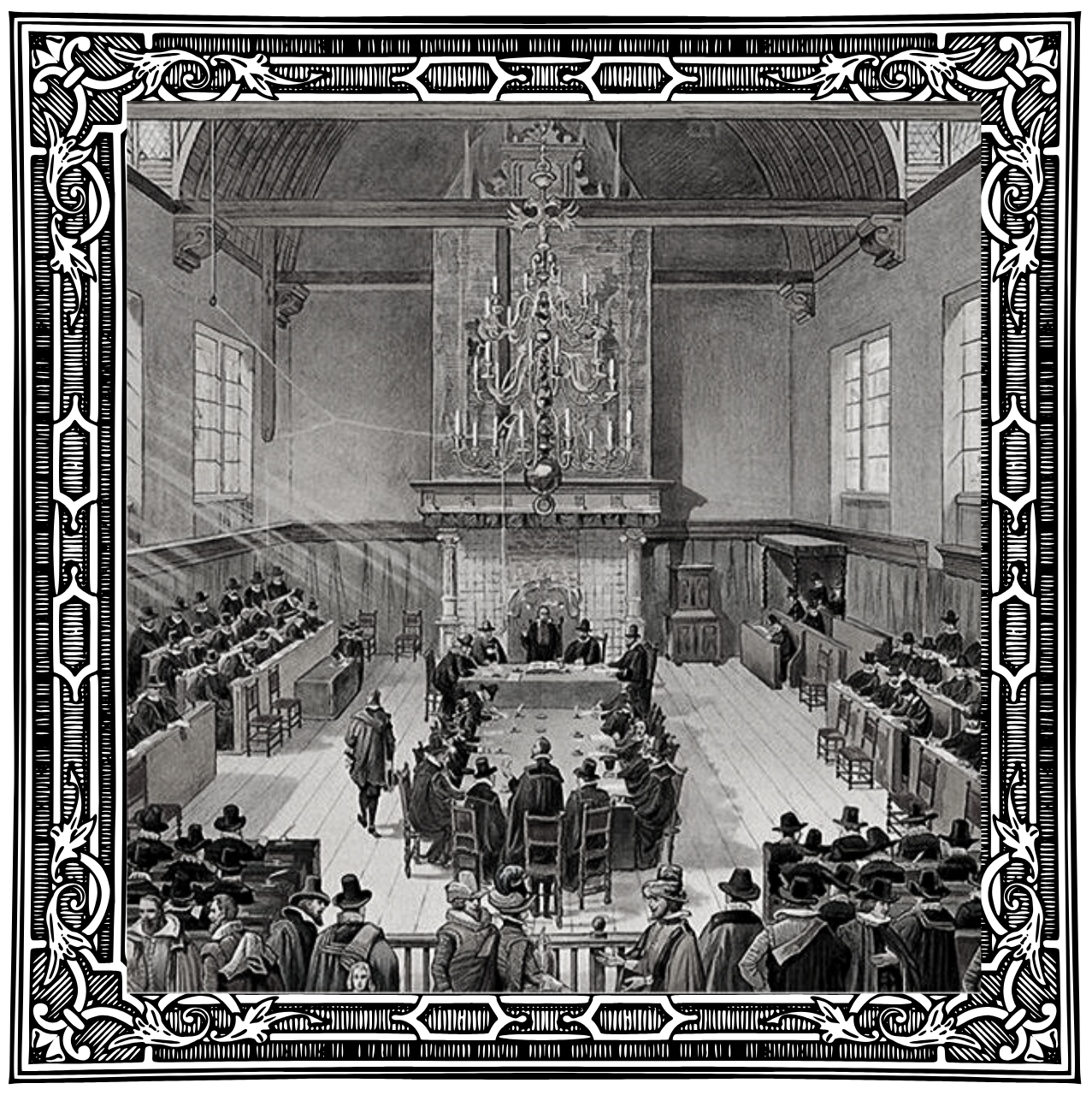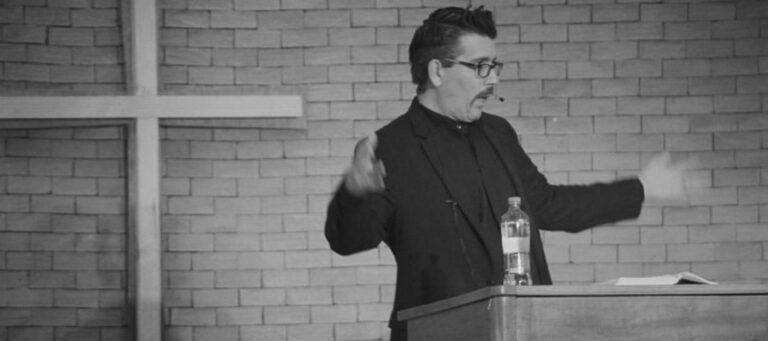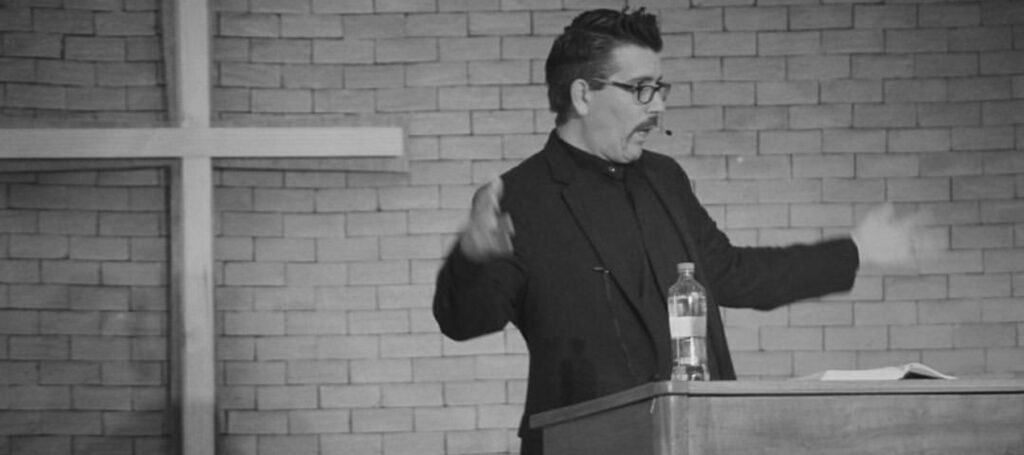We’ve come to the end of our series on God’s glory in Exodus. This story began in Egypt, moved into the wilderness, and has brought us to Sinai. We’ve heard Israel’s prayers and have seen God’s answers. Pharaoh’s persecution was prominent but God’s liberation was more so. In the law we learned how to find Christ and the gospel as well as our own gratitude. God’s glory in the tabernacle has taught us the mysteries of our redemption under types and shadows.
Yet as we come to the end of Exodus, it’s really a beginning. From this point forward Israel has a meeting place with the Lord. Israel begins its journey toward the Promised Land. But this beginning is much more than that. As we meditate upon the actual erecting of the tabernacle, I want you to lift up your hearts and minds and to see the heavenly reality. This event is nothing less than a new beginning theologically. Herman Witsius said, “God created the world in six days, but he used forty to instruct Moses about the tabernacle. Little over one chapter was needed to describe the structure of the world, but six were used for the tabernacle.”[1] God’s glory in the tabernacle is seen in several ways.
In the Commands
Exodus 40:1–15 contains eighteen commands:
- build the tabernacle (40:2)
- put the ark in it (40:3)
- hang the veil before the ark (40:3)
- set up the table (40:4)
- …the lampstand (40:4)
- …the altar of incense (40:5)
- hang the screen of the tabernacle (40:5)
- set up the altar of burnt offering (40:6)
- …the bronze basin (40:7)
- …the curtains around the court (40:8)
- anoint the tabernacle and its furniture (40:9)
- …the altar of burnt offering and its utensils (40:10)
- …the bronze basin and its stand (40:11)
- wash Aaron and his sons (40:12)
- clothe Aaron (40:13)
- anoint Aaron (40:13)
- clothe his sons (40:14)
- anoint his sons (40:15).
Then what? “This Moses did; according to all that the Lord commanded him, so he did” (v. 16). Verses 18–33 go on to say how each and every command was fulfilled just “as the Lord had commanded Moses.” Finally, verse 33 says, “So Moses finished the work.” Sound familiar? “And God said, “Let there be’ . . . And it was so.” Just as in creation God commanded and his commands were fulfilled, so too in the tabernacle.
Pause and reflect on the beauty of the Word here. When we do, we begin to see how themes from earlier parts of Scripture continue throughout the rest of Scripture. We call this “biblical theology.” This beauty of the Word is a reflection of the beautiful wisdom and inspiration by the Holy Spirit. This should cause us to delight and take pleasure in the Word and in God’s glory in the tabernacle.
In the Calendar
Did you notice the date assigned to the event in Exodus 40? Don’t skip the details. “In the first month in the second year, on the first day of the month, the tabernacle was erected” (v. 17). It’s the New Year or a new beginning. In fact, it’s been exactly one year since God told Moses that he was restarting their calendar. Look back at Exodus 12. When he spoke of the Passover he said, “This month shall be for you the beginning of months. It shall be the first month of the year for you” (12:2). Then he proceeded to tell Moses all about the Passover celebration and their liberation from Egypt.
You see God is a God of new beginnings. We saw with Moses’ interceding and God’s renewing his covenant that the Bible uses various terms to describe this: restoration, revival, renewal, even reformation. God brings new beginnings to his people. In fact, he says, “If anyone is in Christ, he is a new creation. The old has passed away; behold, the new has come” (2 Cor. 5:17). When you turn away from yourself and turn to Jesus and trust that he lived a perfect life, died on the cross, and rose again for you, God starts anew. In fact, a few chapters earlier the apostle Paul describes being a Christian as undergoing a metamorphosis: “And we all…are being transformed into the same image [of Christ] from one degree of glory to another” (2 Cor. 3:18).
In the Consecration
In verses 12–15 Aaron and his sons Nabad, Abihu, Eleazar, and Ithamar come before Moses. He then washed, robed, and anointed them to serve as High Priest and priests, respectively. How long did this take? Exodus 29 says this consecration occurred over a period of seven days. Just as God created the heavens and the earth in six days then rested, so with the erecting of the tabernacle and consecration of the priests. It’s no coincidence that the seventh day of consecration corresponded with the fire and cloud falling upon the tabernacle in verses 34–38. That was the sign of God’s rest and pleasure in what he had made.
In a letter from J. R. R. Tolkien to his son, Christopher, father Tolkien said, “We all long for [Eden], and we are constantly glimpsing it.”[2] Since God made our first father, Adam, to live with him in Eden, there’s been a glimpse of that left on the human conscience and soul. We see this in the tabernacle. It’s Eden again; better, it’s heaven on earth.
In the Cloud
Finally, let’s go back to creation. Remember Genesis 1:2: “And the Spirit of God hovered over the face of the deep.” Now read Exodus 40:34–38. The cloud covered the tent, the glory of the Lord filled it, the cloud settled on it, the cloud was on the tabernacle, and the fire was in it.
Later this all changes when Israel sinned. Leviticus 26’s curse of exile took effect. Eventually, God’s glory departed from the holy temple (Ezek. 10:4, 18–19; 11:22; 12:1–15). But he always gave glimpses of the promise of glory returning (Ezek. 43:2–9; Hag. 2:3–9; Zech. 2:5, 10–11). When did this happen? In the Word made flesh, what we call the incarnation (John 1:14–18).
What does this mean for us? The New Testament describes us as Christians as temples of the living God (2 Cor. 6). God dwells and walks among us. His Spirit fills, leads, and guides us. We need to learn how to discern when he’s picking up and leading; when he’s resting and keeping us where we’re at.
But this ultimately is a type and shadow of our Lord Jesus Christ. “And the Word became flesh and tabernacled among us.” This occurred by means of the Holy Spirit who overshadowed the Virgin Mary and conceived in her the Son of God. Isn’t it amazing how you turn to John 1 and John opens this passage reflecting upon how our Lord created everything? He’s the author of the first creation; he’s the author of a new creation, a new beginning.
He entered the heavenly tabernacle (Heb. 8–10) and we get too as well (Heb. 12)! We now worship in heaven: “The worship of the Gospel, which is spiritually glorious, makes a nearer approach unto [heaven] than that of the Temple, which was outward and carnally [glorious].”[3]
There are three hindrances to our worship, though. First, our sins cling to our worship making it less heavenly. Second, the weakness of our worship makes it less heavenly. Finally, the unworthiness of the worshipper—you! Yet there are three remedies: Christ’s sacrifice takes away sin and makes worship acceptable; his intercession empowers our worship; and his person takes way our frail conscience and says because he is acceptable so are we in him.[4]
Conclusion
Exodus began in the darkness of suffering; it ends in the light of the gospel. We began with their cries to God that seemed unanswered; we end the story with God’s answer in his activity among his people. In Egypt, he seemed to be absent; in the wilderness his precious presence was among them—and us today. God’s glory in the tabernacle in his glory in Jesus Christ among us!
[1] Misc. Sacrorum, 1712, 394f.
[2] The Letters of J.R.R. Tolkien, 110.
[3] Owen, Works, 1:256.
[4] Owen, Works, 1:258–259.







